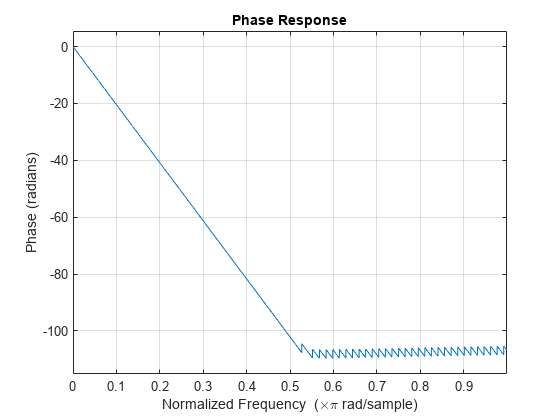phasez
Phase response of discrete-time filter System object (unwrapped)
Syntax
Description
[ returns the unwrapped phase response
phi,w]
= phasez(sysobj)phi of the filter System object™, sysobj, based on the current filter
coefficients. The vector w contains the frequencies (in radians)
at which the function evaluates the phase response. The phase response is evaluated
at 8192 points equally spaced around the upper half of the unit circle.
